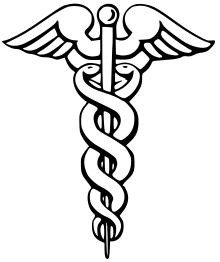Direct primary care
In the United States, direct primary care (DPC) is a type of primary care billing and payment arrangement made between patients and medical providers, without sending claims to insurance providers. It is an umbrella term, incorporating various health care delivery systems that involve direct financial relationships between patients and health care providers.
| This article is part of a series on |
| Healthcare reform in the United States of America |
|---|
 |
|
Legislation
|
|
Reforms |
|
Systems
|
|
Third-party payment models
|
|
|
Background
Direct primary care has been promoted by certain groups of physicians as a means for patients to save money on their primary care services, as well as other ancillary-performed services such as laboratory testing, etc. Often, there are no insurance co-pays, deductibles or co-insurance fees thus avoiding the overhead and complexity of maintaining relationships with insurers.[1]
Under this model, patients may pay a combination of visit fees and/or fixed monthly fees which grant them access to a set of medical services, including same and next-day appointments, which may take the form of office visits and/or house calls.[2]
Typically a direct primary care arrangement is paired with either:
- A high-deductible health plan, as DPC alone will not cover catastrophic health care such as most surgeries
- A health savings account, or health reimbursement account as the associated tax-benefits can generally be applied to DPC and other medical expenses.
One of the lesser known provisions of the 2010 Patient Protection and Affordable Care Act in the United States can be found in Section 1301 (and amendment Section 10104). This provision allows for direct primary care to compete with traditional health insurance options in the mandated Health insurance exchange when combined with a low cost high deductible plan.
Advantages
Direct primary care practices do not typically accept insurance payments, thus avoiding the overhead and complexity of maintaining relationships with insurers, which can take as much as $0.10 - $0.20 of each medical dollar spent.[3] Consequently, because direct pay members are usually automatically billed a physicians practice's cash flow can also be improved.
An emerging model of direct primary care involves the medical practice contracting with self-insured (or self-funded) employers who offer the direct primary care option as a means of accessing care for free or drastically reduced office visit fees. This is also known as onsite health. The employer pays the membership fees on behalf of the employee to the DPC practice directly. This option usually provides the employee same or next business day access to care. This allows workers to address evolving health concerns rapidly in order that the condition can be treated more quickly and the number of sick days or days of decreased productivity from illness might be reduced. Many DPC practices provide phone or email access to providers so that employees or patients may not even need to leave their workplace to seek medical advice.
Because direct primary care payments are typically paid over time, rather than in return for specific services, the economic incentives are such that the long-term health of the patient is the most lucrative situation for the doctor. As such, preventative care gains greater emphasis under DPC.[4]
Criticisms
Opponents of direct primary care models assert that direct primary care is unethical, primarily benefitting providers and not patients. The US Patient Protection and Affordable Care Act requires that DPC practices offering such services must include in their plans a secondary qualifying health plan (QHP) that covers other hospital services that the DPC provider may not offer if they choose to offer their DPC arrangement in the healthcare marketplace. Therefore, in cases where the DPC provider has chosen to participate in the healthcare marketplace, the patient would be required to carry and pay for an additional insurance coverage plan for catastrophic and hospital services in addition to the DPC arrangement for primary health care access if he/she purchases this plan from the healthcare marketplace. It is argued that DPC plans can be more expensive in the long term, since by design none of the payments made to the DPC provider practice are counted towards insurance deductibles because the provider neither accepts insurance nor participates in the submission and management of the insurance claims process, potentially resulting in a higher out-of-pocket catastrophic or hospital services cost to the patient because deductibles would not necessarily have been reached when these services are provided.[5]
See also
- Consumer-driven health care
- Concierge medicine
References
- "Direct Primary Care". Health 401k. 2011-12-30. Retrieved 2012-01-08.
- Chase, Dave (2013-04-30). "On Retainer: Direct Primary Care Practices Bypass Insurance - California Health Care Foundation". California Health Care Foundation.
- Pierre, Yong (2010). The Healthcare Imperative: Lowering Costs and Improving Outcomes: Workshop Series Summary. Washington DC: The National Academies Press. pp. 141–174.
- Chase, Dave. "How direct primary care reduces primary care costs". KevinMD.com. Retrieved 17 February 2012.
- Engelhard, Carolyn. "Is direct primary care part of the solution or part of the problem?". TheHill.com. Retrieved 17 July 2015.